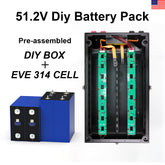A Comprehensive Overview of Refrigerator Power Consumption
Refrigerators operate continuously, making them one of the largest consumers of energy in most households. On average, a typical refrigerator accounts for around 13% of a home’s total energy use. This figure may vary depending on the type of refrigerator, its size, and energy efficiency rating. For example:
- Top-freezer refrigerators are generally more energy-efficient than side-by-side models.
- Smart refrigerators may use more power due to additional features like touchscreens and internet connectivity.
Understanding how much electricity your refrigerator consumes is the first step toward identifying potential savings.
- How to Measure Your Refrigerator's Power Consumption
- Hedge Trimmer Analogy – A Practical Comparison
- Factors That Influence Refrigerator Power Consumption
- Hedge Trimmer Tips for Optimizing Refrigerator Efficiency
- Choosing the Right Hedge Trimmer-Like Approach to Buying a Refrigerator
- Hedge Trimmer-Like DIY Techniques to Reduce Refrigerator Energy Usage
- The Connection Between Refrigerator and Hedge Trimmer Maintenance
How to Measure Your Refrigerator's Power Consumption
Knowing the exact power consumption of your refrigerator can help you decide whether to upgrade or make adjustments. Here are steps to calculate it:
- Check the energy label: Most modern refrigerators come with an energy rating label that indicates annual energy consumption in kWh.
- Use a power meter: A plug-in power meter can measure real-time electricity usage.
- Calculate manually: Multiply the wattage by the hours of operation per day. Divide by 1,000 to get kWh.
Understanding Energy Efficiency Ratings
Refrigerators come with Energy Star ratings or similar certifications, which indicate their energy efficiency. Appliances with higher ratings consume less electricity, helping you save on power bills in the long term.
>>See also Is It Safe To Store Power Tool Batteries In The Garage
Hedge Trimmer Analogy – A Practical Comparison
Let’s compare refrigerator energy usage with another household device: a hedge trimmer. While hedge trimmers operate intermittently and consume energy during short bursts, refrigerators run continuously. A typical hedge trimmer may use about 500 watts, while a refrigerator’s usage depends on its efficiency and model. Comparing these appliances highlights why optimizing refrigerator energy use is critical for significant savings.
How Does Usage Frequency Differ?
Hedge trimmers are seasonal tools, typically used for a few hours during gardening seasons. On the other hand, refrigerators are operational 24/7, which emphasizes the need for energy-efficient models and proper maintenance.
Can the Principles of Hedge Trimmer Maintenance Apply to Refrigerators?
Just as maintaining sharp blades in a hedge trimmer improves performance, maintaining your refrigerator—cleaning coils, ensuring proper door seals, and avoiding overloading—can significantly reduce power consumption.
Factors That Influence Refrigerator Power Consumption
The energy a refrigerator consumes can be affected by several factors. Let’s explore these in detail:
- Age and Model
Older refrigerators generally consume more power than newer models equipped with advanced energy-saving technologies. For example, a 15-year-old refrigerator could consume twice as much energy as an Energy Star-certified unit.
- Location and Temperature
Refrigerators placed in hot or humid environments tend to work harder to maintain the desired internal temperature. Similarly, refrigerators located near ovens or under direct sunlight may consume more energy.
- Usage Habits
Frequent opening and closing of the refrigerator door allows warm air to enter, forcing the compressor to work harder.
Hedge Trimmer Tips for Optimizing Refrigerator Efficiency
Interestingly, the same principles that help optimize hedge trimmer performance can apply to refrigerators. Here’s how:
Regular Maintenance
- Clean condenser coils every 6 months to ensure smooth operation.
- Inspect door seals to prevent cool air from escaping.
Adjust Settings Appropriately
- Set the refrigerator temperature to around 37°F and the freezer to 0°F.
- Avoid setting temperatures too low, as this increases energy usage unnecessarily.
Choosing the Right Hedge Trimmer-Like Approach to Buying a Refrigerator
When purchasing a new refrigerator, adopting a methodical approach can save you both money and energy in the long run.
- Look for Energy Star Certification
Energy Star-certified models are designed to use 15% less energy than non-certified models.
- Opt for an Inverter Compressor
Refrigerators with inverter compressors adjust their cooling speed according to the requirement, using less energy than traditional compressors.
- Consider the Size
Choose a refrigerator that matches your household needs. Larger refrigerators use more energy, so avoid oversized units unless absolutely necessary.
>>See also LR1130, AG10, 389, 390 Battery Alternatives And Substitutes
Hedge Trimmer-Like DIY Techniques to Reduce Refrigerator Energy Usage
You can take simple steps to reduce energy consumption without replacing your refrigerator.
- Defrost Regularly
Frost buildup in freezers can reduce efficiency. Defrost your refrigerator as needed to maintain optimal performance.
- Organize Items Efficiently
Proper organization helps reduce the time the door stays open while you search for items.
- Keep the Refrigerator Full
A full refrigerator retains cold air better than an empty one. If necessary, place bottles of water inside to fill empty spaces.
The Connection Between Refrigerator and Hedge Trimmer Maintenance
Both refrigerators and hedge trimmers require consistent maintenance for optimal performance and energy efficiency. Cleaning, regular inspections, and proper usage habits can go a long way in reducing energy costs.
Conclusion
Understanding refrigerator power consumption is crucial for managing energy costs and promoting sustainability. Much like maintaining a hedge trimmer, regular care, and smart usage can maximize your refrigerator’s efficiency. Whether you’re planning to upgrade to an Energy Star-certified model or implement cost-effective DIY techniques, there’s always room to optimize.
Take control of your energy consumption today, and make your refrigerator an asset in your journey toward a greener, more cost-efficient household.
























Leave a comment
All blog comments are checked prior to publishing